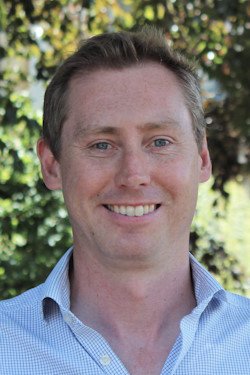Samuel D. Stranks
2024 United Kingdom Award Finalist — Faculty

Current Position:
Professor of Optoelectronics
Institution:
University of Cambridge
Discipline:
Physical Chemistry

Current Position:
Professor of Optoelectronics
Institution:
University of Cambridge
Discipline:
Physical Chemistry
Recognized for: The development of novel techniques to uncover how perovskite materials, used in high-efficiency solar cells, behave under a variety of conditions. Stranks’ work particularly sheds light on where efficiency losses are in perovskite materials and how they degrade over time, providing critical guidance to engineer long-lasting and high-performing commercial solar cells.
Areas of Research Interest and Expertise: Photovoltaics, Light-emitting diodes, X-ray detectors, Optical spectroscopy, Halide perovskites
Previous Positions:
Research Summary:
Solar photovoltaics will play a major role in global energy decarbonization, but the traditional silicon-based solar cell technology has reached an efficiency plateau. Next-generation solar cells based on perovskite materials hold extraordinary potential to improve solar panel efficiency. These materials also have the advantage of being affordable, lightweight and flexible. Despite the rapid increase in efficiency of perovskite solar cells, a number of technical challenges remain before they can be deployed commercially. Samuel D. Stranks, DPhil, is uncovering the optical and electronic properties of novel semiconductors, including perovskites, to inform the design of low-cost technologies to drive the energy transition.
Stranks’ research group bridges materials science, chemistry, physics and engineering not only to provide a fundamental understanding of perovskite semiconductor materials but also to drive this critical technology forward. Stranks uses material characterization techniques like optical spectroscopy to measure device performance on a range of length and time scales and to further relate these characteristics to local chemical and structural properties. This provides a unique platform to discover new semiconducting materials, guide innovative device designs and push performance limits. Stranks’ improvements of these emerging semiconductors are also informing the design of high-efficiency, low-cost LEDs and new devices for medical imaging.
Stranks has significantly advanced the field of solar photovoltaics through his groundbreaking contributions. His achievements include conducting the initial measurements of long electron diffusion lengths, establishing now-standard models for charge recombination and introducing innovative chemical improvements in solar cell design. These fundamental scientific breakthroughs not only have resulted in tangible enhancements in device efficiency, but they are also leading improvements in perovskite solar cell lifespan and stability. Stranks has taken his research beyond the laboratory in co-founding Swift Solar, a company dedicated to developing high-performance perovskite solar modules scaled for global energy needs.
"My research aims to make a real difference on global challenges such as climate change by developing next-generation solar cell, lighting and detector technologies. What an honour it is to be recognised as a Blavatnik Awards honouree for this work!"
Key Publications:
Other Honors:
| 2023 | Stanisław Lem European Research Prize, Wroclaw University |
| 2022 | Energy and Environmental Science Lectureship, Royal Society of Chemistry |
| 2021 | Philip Leverhulme Prize in Physics, Leverhulme Trust |
| 2021 | Stuart R. Wenham Young Professional in Photovoltaics Award, Institute of Electrical and Electronics Engineers |
| 2019 | Marlow Award, Royal Society of Chemistry |
| 2018 | Henry Moseley Medal and Prize, Institute of Physics |
| 2017 | Early Career Prize, European Physical Society |
| 2017 | 35 under 35 Innovators Europe, MIT Technology Review |
| 2016 | TED Fellow |
| 2016 | Young Scientist in Semiconductor Physics Prize, International Union of Pure and Applied Physics |
In the Media:
PhysicsWorld – Nanoscale Impurities Degrade Halide Perovskites
SciTechDaily – Templating Approach Stabilizes “Ideal” Perovskite Material for Cheap, Efficient Solar Cells
Wired – Fast Nanoscale ‘Movies’ Shed Light on a Solar Cell Mystery
Phys.org – Mystery of High Performing Novel Solar Cell Materials Revealed in Stunning Clarity
The Conversation – How a New Solar and Lighting Technology Could Propel a Renewable Energy Transformation